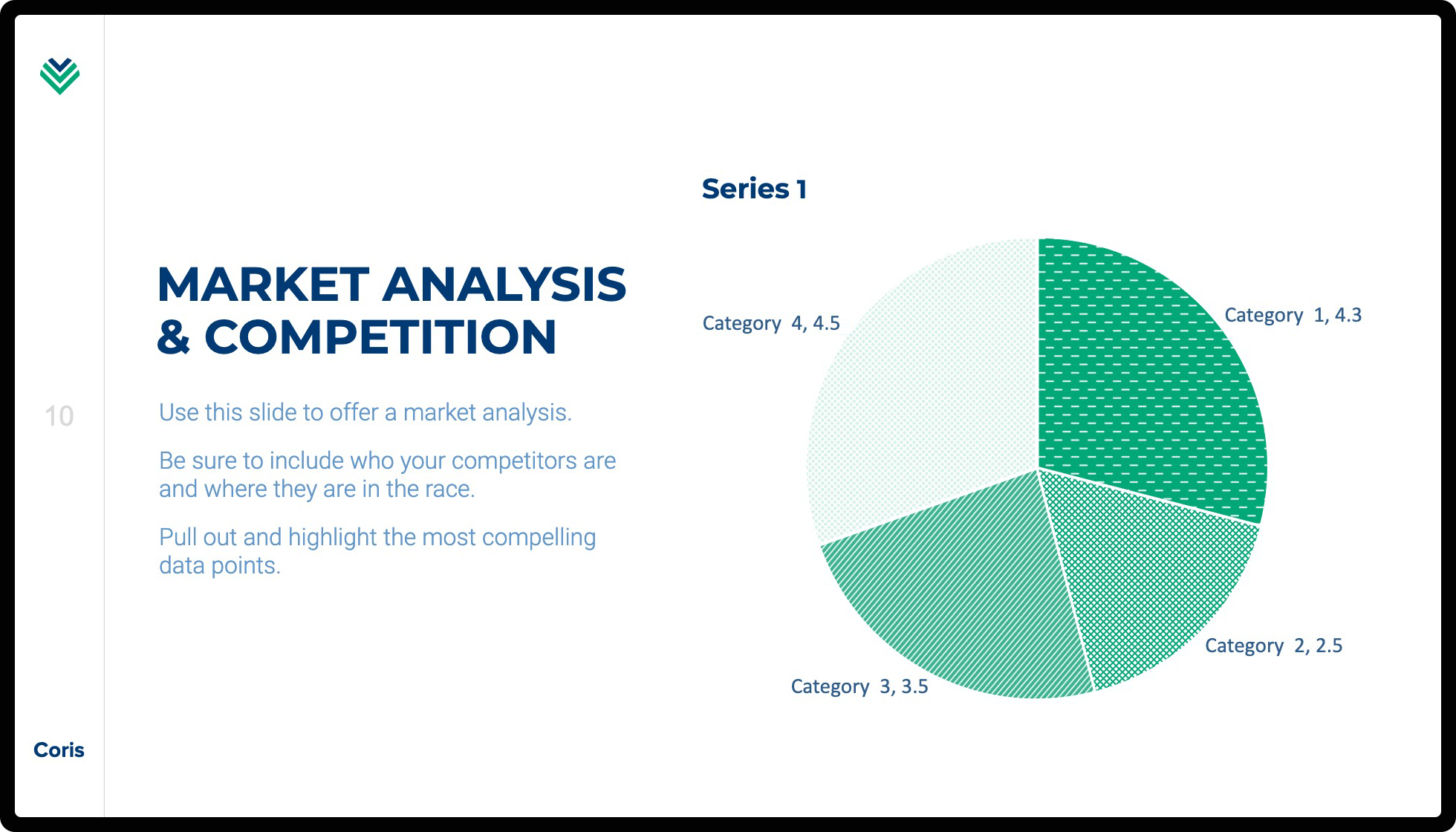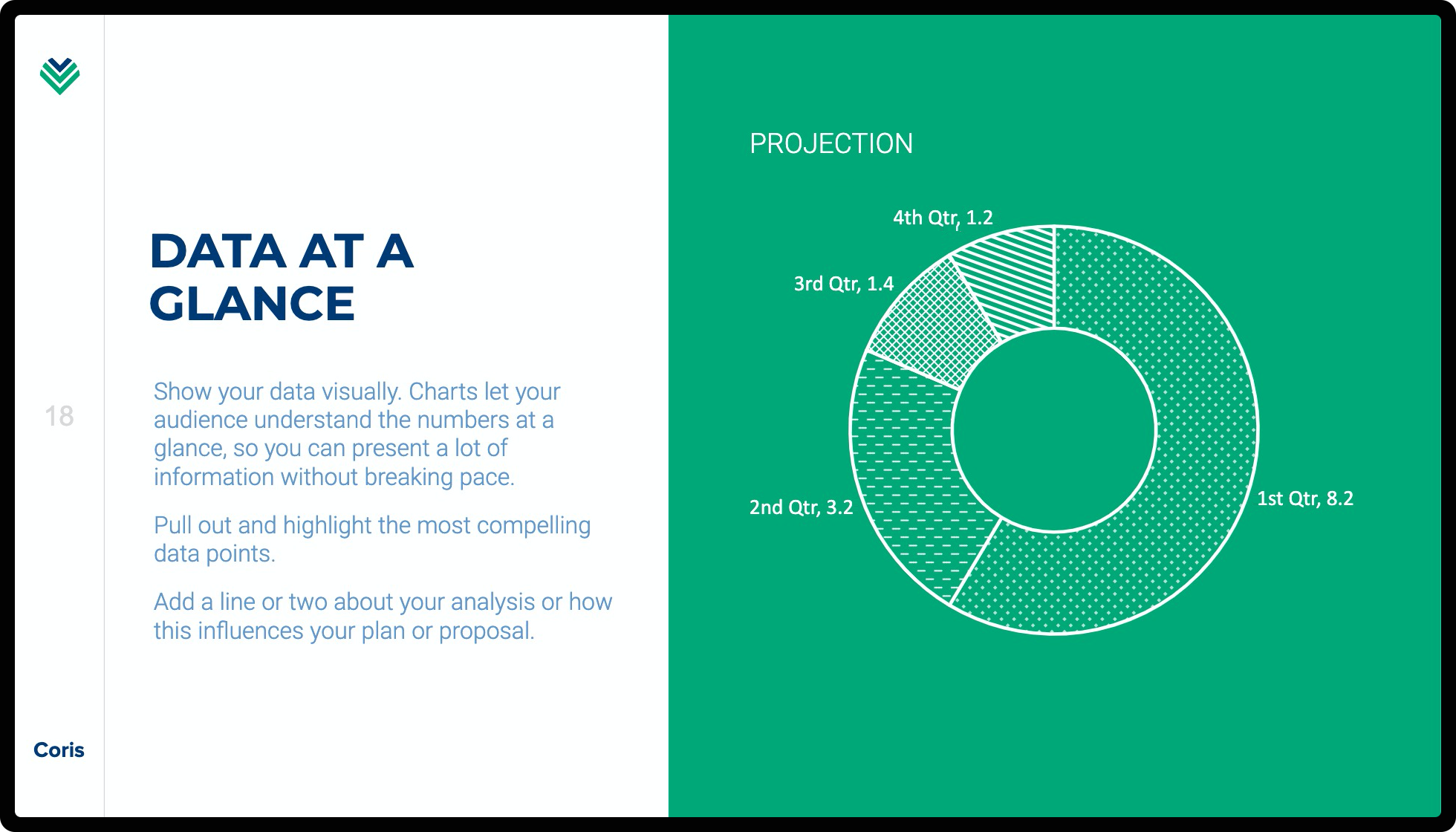Nearly every professional, regardless of their role and field, will create and deliver a business presentation at some point in their career. Creating a slide deck takes a lot of preparation, including planning the content, structuring the slides, designing with appealing visuals and rehearsing the pitch.
The 10-20-30 rule is a commonly used and much-praised structure for creating a business presentation. Following the 10-20-30 rule, the presenter should not present more than 10 slides, should not exceed 20 minutes, and should not use font sizes less than 30 point. Created by Guy Kawasaki, this method is for presenters to create and deliver impactful presentation.
For a business deck, presenting your content in 10 slides can be a challenging task, as your messaging needs to be concise yet persuasive. Here are 10 slides that you should include in your business presentation to make your slide deck a success.
1. Title slide
This is the introduction slide that gives your audience an overview of what your presentation is about. Include important details like your topic, company name, logo, date of presentation, presenter name, and designation.
What makes a good title slide?
If you’re promoting a product or a service to your audience, then use a picture of it in the title slide instead of stock images. Provide crucial details that help your audience understand what they can expect from the session. Use a clean, simple font style in an appropriate size with a contrasting background to make the title easy to read.
2. Problem statement
The objective of a business presentation should be to offer a solution to a business problem. Use this slide to define the problem for which you’re proposing a solution. Make your points clear, concise, and persuasive by highlighting the impact it has on the business.
What makes a good problem statement slide?
State the business problem you’ve set out to solve. Involve your audience by asking them if they have a solution to the above problem and then explain how your idea can impact the business. Make your content precise and easy to read without overwhelming your audience with too much information.
3. Goals
Define the goals you’re aiming to achieve through this presentation and list them as stages in your plan. Demonstrate your goals as points with a realistic timeline for each milestone.
What makes a good goals slide?
Goals help set the direction for your business plan. Let’s say you’re launching a new product in the market and need to list the various milestones you’re aiming to accomplish to get the product to your audience. Instead of showcasing them as plain bullet points, break them down into milestones with timelines. Explain them in a few words and emphasize key points with animation effects and icons to make it visually appealing.
4. Solution or Strategy
Now that you have mentioned the problem and set goals for your business, use this slide to talk about how you’re planning to achieve them. Write an overview of your strategy and plan of action and highlight the key points.
What makes a good solution slide?
Introduce your strategy with an impressive title and emphasize important content using text effects. Make your content compelling by highlighting the benefits of your strategy and presenting your solution as a narrative with eye-catching visuals and icons.
5. Analysis
Your market, SWOT, and competitor analysis form an essential component in laying out your business plan in detail. Use supporting data in your business presentation to walk your audience through the analysis.

What makes a good analysis slide?
If your slide deck is for a product launch, then validate your strategy by including your analysis of the market, competitors, and your target customers to understand your position in the business. Instead of plain text, use charts and tables to explain your insights for these numbers. Bring your data to life with animation and text effects.
6. Financial plan and revenue
Your business presentation should include your financial plan, revenue projections, and other relevant metrics necessary to measure the success of your business strategy.
What makes a good finance slide?
Present the budget required for different business stages like research, development, execution, marketing, etc. Use charts to break down your finances in planned stages. Add visuals and bring your charts to life with animation and effects.
7. Data
Every business deck needs supporting data to validate your analysis and plan. Use charts and tables to help your audience understand your business position better.

What makes a good data slide?
For business presentations like project management, add data to compare and analyze your plan and identify areas of improvement. Determine the best chart style to showcase your numbers and highlight the compelling data points, then add a line or two of your own conclusions from these numbers and explain them in detail during the presentation.
8. Timeline
Setting up a timeline for your business is crucial as it establishes the direction, priorities, and roadmap for achieving your business goals. You can also use a timeline to showcase your company’s journey by featuring various milestones, starting with its inception and highlighting some of your prominent projects to date.
What makes a good timeline slide?
Make your timeline slide less text-heavy and more visual with a timeline chart to take your audience through the various milestones. Add visuals, icons, and path animations to make your timeline visually engaging.
9. Team
Introducing your team members forms an integral part of your business presentation as its sends a strong message of your company’s expertise. For a small business, you can introduce all your employees, while bigger companies should introduce members crucial for the operation of your company.

What makes a good team slide?
For presentations like a project report or sales pitch, it’s necessary to include your team slide as the audience needs to know the members involved in the project. Include headshots of your team members with their title/designation, along with a short description of their role in the business.
10. Q&A or End Slide
This will be the closing slide of your business presentation and must leave a lasting impact on your audience. If you want to answer audience questions, schedule your Q&A session at the end of your presentation.
What makes a good end slide?
A good end slide recaps your overall presentation and contains your company’s important details. Close your presentation with a rhetorical question to make a thought-provoking impact on your audience.
For nearly every type of business presentation or pitch, these ten slides will help you create a strong framework for your slide deck. However, don’t forget that different sorts of business presentations have their styles and needs based on the objective, industry, and the target audience. To learn more about some best practices for creating a presentation template for every industry, take a look at our previous blog post.
Comments